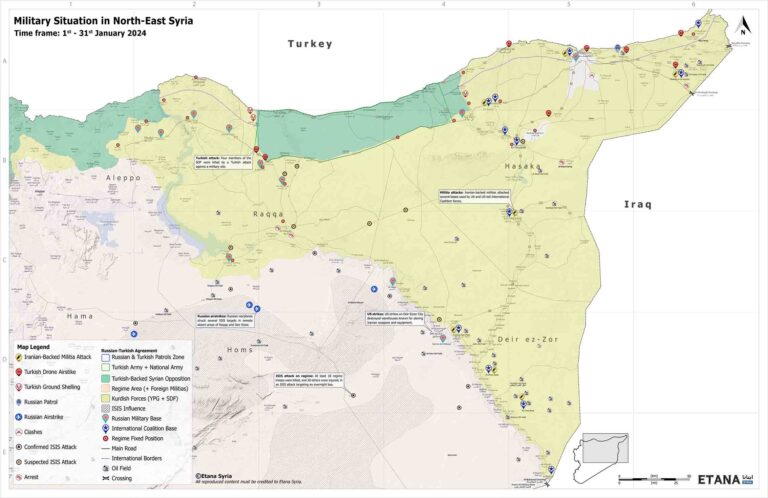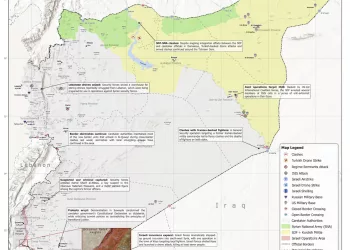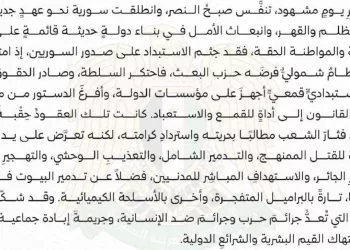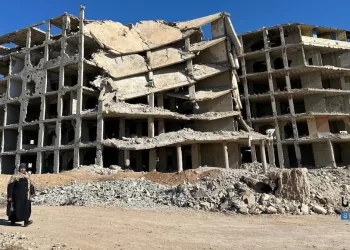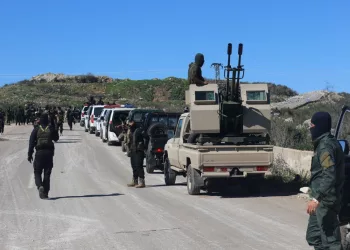January marked one of the most violent and sustained periods of hostilities between Iranian-backed militias and US and International Coalition forces to date. While Iranian-backed militias launched at least 18 attacks over the course of the month, this reached a lethal peak on 28th January when the “Islamic Resistance in Iraq”—an umbrella formation of Iraq-based Iranian proxies—hit a Jordanian post along the Syrian-Jordanian border with a suicide drone, killing three US soldiers and injuring at least 34 others. Such an attack can only have taken place with the command-chain responsibility of senior Iranian commanders, and represents a significant escalation in the region, even when compared with tit-for-tat violence between Iranian proxies and the US since last October. The US responded in early February with an unprecedented series of airstrikes in both Syria and Iraq, ultimately killing at least 11 Iranian-backed fighters in Syria. Concurrently, attacks by ISIS cells surged to their highest rate in months, resulting in the deaths of 19 Syrian Democratic Forces (SDF) troops and 23 regime soldiers.
Attached Map:
Military Situation in North-East Syria
(For a high-resolution version of this map, please use the form at the bottom of the page)
Iranian Activity
In an unprecedented escalation, the Iranian-backed “Islamic Resistance in Iraq” launched a suicide drone attack from Iraq into Jordan, targeting a Jordanian border post along the Syrian-Jordanian border that was hosting US troops. Three US soldiers died in the attack, with more than 30 others injured.
After US officials threatened a retaliation at a time of their choosing in the immediate aftermath of the drone strike, US jets launched a wave of airstrikes days later that targeted Iranian-backed and Hezbollah targets in both Syria and Iraq. US forces launched several strikes against Iranian-backed militias in and around Deir Ezzor city, destroying the regime-operated Ayash warehouses in Deir Ezzor city, which are known storage facilities for Iranian weapons and equipment.
Additional airstrikes targeted Hezbollah command centers in Deir Ezzor city. Preliminary reports indicate that US warplanes targeted more than a half dozen positions in north-east Syria, resulting in deaths of at least 11 Iranian-backed fighters and the injury of 18 others. Of the confirmed fatalities, all but one—an Afghan Liwa al-Fatemiyoun commander named Ali al-Husseini—were Syrian fighters.
Before the 28th January attack in Jordan and the US’ subsequent wave of retaliatory strikes in Syria and Iraq, the US-led Coalition conducted a series of smaller-scale retaliations across January in response to continued Iranian-backed militia activity. On the Iranian side, various militias launched an all-time monthly high of at least 18 offensive operations against US and US-led International Coalition personnel and infrastructure in Deir Ezzor and Hasakeh.
ISIS Activity
Increased ISIS activity across north-east Syria has continued to destabilize the region, with anti-SDF attacks recorded in Deir Ezzor, Hasakeh and Raqqa provinces in January. A total of 19 armed attacks and 14 IED blasts claimed the lives of more than 19 SDF fighters and wounded dozens more. These casualty figures are the highest seen in months and portend an ominous trend of rising extremist capabilities across the wider area.
SDF Activity
The SDF has continued to face attacks from Turkish forces and the Turkish-backed Syrian National Army (SNA), with bombardments against SDF targets recorded on a nearly daily basis over the past month. In recent weeks, drone and artillery strikes targeted SDF positions in Hasakeh and Raqqa provinces. At least 18 SDF members were killed in these strikes.
Russian & Regime Activity
Russian forces have ramped-up a longstanding aerial campaign against ISIS forces in the central Badia following a sharp spike in ISIS attacks that have killed growing numbers of regime forces across the north-east. Russian warplanes launched strikes against ISIS targets in the remote desert regions around western Deir Ezzor and southern Raqqa. In line with previous ineffective Russian anti-ISIS efforts, its current bombing campaign has had limited impact in curbing ISIS attacks and activities in the region.
Political & Humanitarian Developments
Ongoing violence, winter cold and sub-standard living conditions continue to regularly claim the lives of residents in al-Hol camp. In recent weeks, three individuals died in the camp, including two children. Additionally, in a major series of raids across all sections of the camp in recent weeks, the SDF arrested more than 46 individuals; at least half of the detained are believed to be children.


